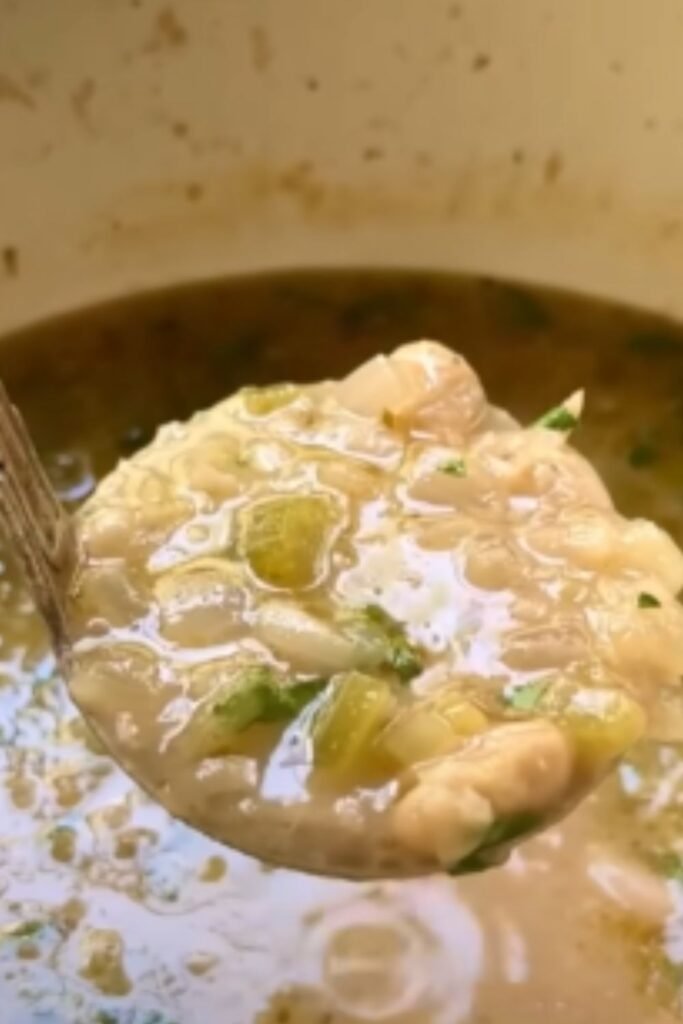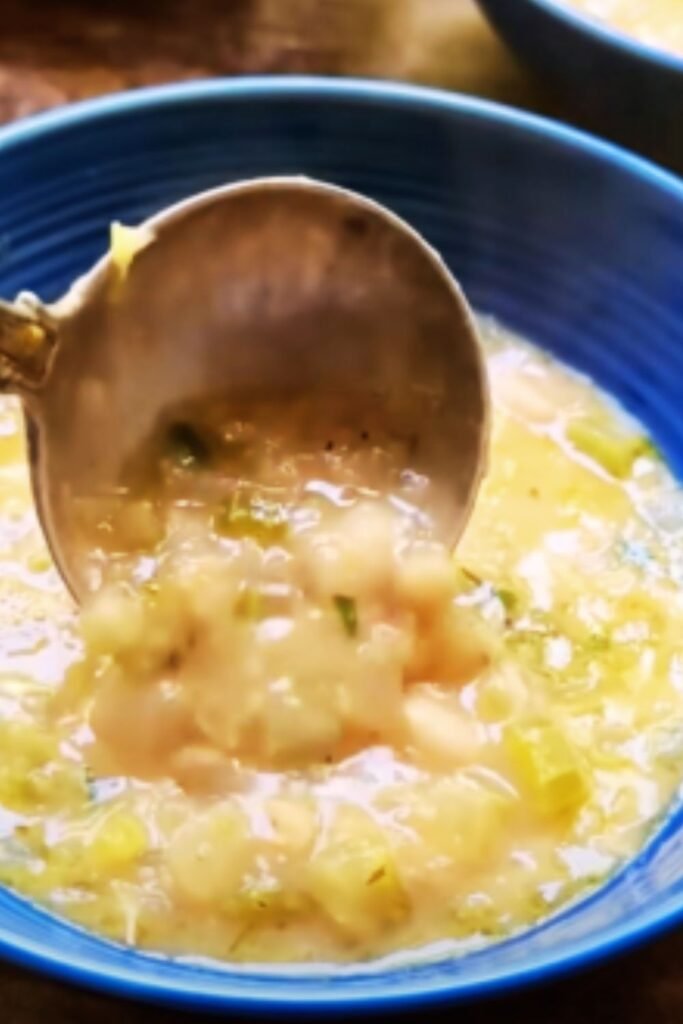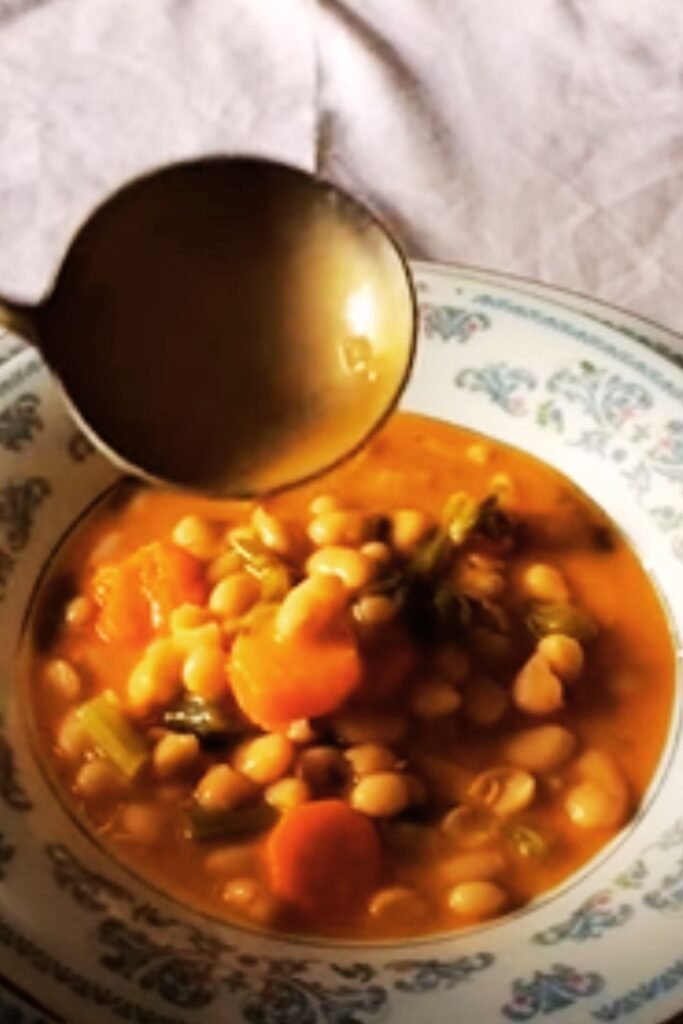There’s something deeply comforting about a bowl of bean soup, especially when winter winds begin to howl outside your window. As someone who has traveled extensively through Greece, I’ve had the pleasure of experiencing authentic fasolada in tavernas tucked away in mountain villages and seaside towns alike. This humble yet nourishing dish has earned its title as Greece’s national soup for good reason.
Fasolada (φασολάδα in Greek) is more than just a soup—it’s a cultural institution that reflects Greece’s agricultural heritage and resourceful cooking traditions. I’ve spent years perfecting my own version of this classic dish, and today I’m excited to share everything I’ve learned about making this protein-rich, satisfying soup that has sustained generations of Greek families.
The Rich History Behind Fasolada
Fasolada’s roots stretch deep into Greece’s past. Ancient Greeks offered beans as sacrifices to Apollo at the Pyanopsia festival, and the humble bean has remained a staple in Greek cuisine ever since. During times of hardship, particularly through World War II and the difficult years that followed, fasolada became known as “the poor man’s meat”—providing essential protein when animal products were scarce or unaffordable.
In my grandmother’s village near Thessaloniki, Wednesday and Friday were traditionally considered fasting days in the Greek Orthodox tradition, when meat was avoided. Fasolada became the go-to meal for these days, offering sustenance without breaking religious observances. This practical, economical dish has sustained Greek people through good times and bad, becoming deeply woven into the cultural fabric.
The Essential Ingredients
What makes fasolada special is its simplicity. The basic version requires just a handful of ingredients that transform into something greater than the sum of their parts. Here’s what you’ll need for an authentic fasolada:
| Ingredient | Quantity | Notes |
|---|---|---|
| White beans (preferably navy beans) | 500g (about 2½ cups) | Dried beans provide the best texture, though canned can work in a pinch |
| Extra virgin olive oil | 100ml (about ⅓ cup) | Use the best quality Greek olive oil you can find |
| Onions | 2 medium | Yellow or white onions, finely diced |
| Carrots | 2-3 medium | Diced into small cubes |
| Celery | 2-3 stalks | Including the leaves for extra flavor |
| Garlic | 3-4 cloves | Minced or finely chopped |
| Tomatoes | 400g (14oz can) | Canned crushed tomatoes or 3-4 fresh tomatoes, grated |
| Bay leaves | 2 | Fresh or dried |
| Sea salt | To taste | About 1-2 teaspoons |
| Freshly ground black pepper | To taste | About ½ teaspoon |
| Water or vegetable stock | 1.5-2 liters | Depending on desired thickness |
| Fresh parsley | 1 bunch | Chopped, for garnish |
| Lemon | 1-2 | Cut into wedges, for serving |
Preparing the Beans: The Foundation of Great Fasolada
The first time I made fasolada, I skipped the bean soaking step and paid the price with tough, unevenly cooked beans. Don’t make my mistake! Proper bean preparation is crucial:
- Sort and rinse: Spread the dried beans on a light-colored surface and remove any small stones or damaged beans. Rinse thoroughly under cold water.
- Soaking methods: You have two options here:
- Traditional overnight soak: Cover beans with cold water (at least 3 inches above the beans) and leave for 8-12 hours or overnight.
- Quick soak method: Bring beans and water to a boil for 2 minutes, then remove from heat and let sit, covered, for 1 hour.
- Drain and rinse: Discard the soaking water and rinse the beans again. This helps reduce the compounds that cause digestive discomfort.
- Pre-boiling (optional but recommended): Some Greek cooks insist on a preliminary boiling for 10 minutes, then draining and rinsing again before the actual cooking begins. I’ve found this extra step results in creamier beans with better texture.

Traditional Fasolada Recipe: My Family’s Version
After years of experimenting and learning from Greek friends and their yiayias (grandmothers), I’ve settled on this authentic recipe that never fails to transport me back to Greece with each spoonful.
Ingredients
- 500g dried white beans (navy or cannellini)
- 100ml extra virgin Greek olive oil (plus more for serving)
- 2 large onions, finely diced
- 3 carrots, diced
- 3 celery stalks with leaves, chopped
- 4 garlic cloves, minced
- 2 bay leaves
- 1 tablespoon dried oregano
- 400g crushed tomatoes (canned or fresh)
- 1.5-2 liters water or vegetable stock
- Salt and freshly ground black pepper to taste
- Fresh parsley, chopped (for garnish)
- Lemon wedges (for serving)
Instructions
- Prepare the beans as described in the previous section—sort, rinse, soak overnight, drain, and rinse again.
- Heat half the olive oil in a large, heavy-bottomed pot over medium heat. Add the onions and sauté until translucent, about 5 minutes.
- Add the carrots and celery and continue cooking for another 5 minutes, stirring occasionally.
- Stir in the garlic and cook until fragrant, about 1 minute. Be careful not to let it brown.
- Add the drained beans, bay leaves, and oregano. Pour in enough water or stock to cover the beans by about 2 inches. Bring to a boil, then reduce heat to maintain a gentle simmer.
- Cook uncovered for about 40-50 minutes, or until the beans are becoming tender but still have some bite.
- Add the crushed tomatoes and continue to simmer for another 30-40 minutes, until the beans are completely tender and the soup has thickened to your liking. Add more liquid if necessary during cooking.
- Season with salt and pepper toward the end of cooking (adding salt too early can toughen the beans).
- Remove from heat and stir in the remaining olive oil. This final addition of raw olive oil is crucial for authentic flavor.
- Let rest for 10-15 minutes before serving to allow flavors to meld.
- Serve hot with a drizzle of extra virgin olive oil, a sprinkle of fresh parsley, and lemon wedges on the side.
Traditional Variations Across Greece
During my travels through Greece, I’ve discovered fascinating regional variations of fasolada:
| Region | Variation | Key Ingredients |
|---|---|---|
| Peloponnese | Thick and hearty | More tomato paste, less liquid |
| Islands | Lighter version | Often includes lemon juice in the cooking process |
| Northern Greece | Spiced fasolada | Includes paprika and sometimes a touch of cinnamon |
| Crete | Herb-forward | Features wild herbs like purslane or amaranth when in season |
| Epirus | Mountain-style | Includes local smoked pork for non-fasting days |
Making Fasolada in a Pressure Cooker or Instant Pot
Modern cooking tools can significantly reduce the preparation time while maintaining the soul of this traditional dish. Here’s how I adapt the recipe for pressure cooking:
- Skip the soaking if you’re really pressed for time (though a quick 1-hour soak still improves texture).
- Sauté the vegetables using the sauté function of your pressure cooker or Instant Pot.
- Add all ingredients except the final olive oil and fresh garnishes.
- Pressure cook on high for 30 minutes for soaked beans or 40-45 minutes for unsoaked beans.
- Natural pressure release for at least 15 minutes.
- Stir in the remaining olive oil before serving.

Health Benefits: Why Fasolada Deserves a Place in Your Regular Meal Rotation
I’ve always believed that traditional foods persist through generations because they offer something valuable. Fasolada is nutritionally impressive:
| Nutrient | Benefit | Source in Fasolada |
|---|---|---|
| Plant-based protein | Muscle building and repair | White beans (approximately 15g per cup) |
| Dietary fiber | Digestive health and sustained energy | Beans, vegetables (approximately 12g per serving) |
| Antioxidants | Cell protection, anti-inflammatory | Olive oil, tomatoes, onions, garlic |
| Vitamins A & C | Immune support, skin health | Carrots, tomatoes, celery, parsley |
| Iron | Oxygen transport, energy production | Beans (provides approximately 20% of daily needs per serving) |
| Folate | Cell growth, especially important during pregnancy | Beans, green vegetables |
| Healthy fats | Brain health, nutrient absorption | Extra virgin olive oil |
The Mediterranean diet, with dishes like fasolada at its core, is consistently ranked among the healthiest eating patterns in the world. By incorporating this Greek soup into your meal planning, you’re not only enjoying delicious comfort food but also nourishing your body in significant ways.
Serving Suggestions: Creating a Complete Greek Meal
In Greek homes, fasolada is often served as a complete meal with just a few simple accompaniments. Here are my favorite pairings:
Traditional Accompaniments
- Greek country bread: A crusty loaf is essential for soaking up the flavorful broth
- Kalamata olives: The briney, fruity flavor contrasts beautifully with the earthy beans
- Barrel-aged feta cheese: Crumbled over the top or served alongside
- Fresh sliced onions: Many Greeks enjoy raw onion with their fasolada
- Greek salad: A classic horiatiki salad makes this a complete meal
- Pickled vegetables (toursi): For a tangy counterpoint
Modern Serving Ideas
- Serve in hollowed-out bread bowls for an impressive presentation
- Top with crispy fried capers or crispy fried onions for textural contrast
- Pair with grilled halloumi cheese for a protein boost
- Serve smaller portions as a starter before a Greek-themed dinner party
- Create a Mediterranean mezze board with small bowls of fasolada alongside other Greek appetizers
Storing and Freezing: Making the Most of Your Fasolada
One of the best qualities of fasolada is how the flavors develop over time. I often make a double batch because:
- It improves with age: Fasolada tastes even better the next day after flavors have melded overnight.
- Refrigerates well: Stores in an airtight container in the refrigerator for up to 5 days.
- Freezes beautifully: Portion into freezer-safe containers and freeze for up to 3 months.
- Thaws easily: Defrost overnight in the refrigerator or use the defrost function on your microwave.
- Reheating tip: Add a splash of water when reheating, as the soup thickens considerably when stored.

Common Questions About Making Fasolada
Over the years, I’ve been asked many questions about making the perfect fasolada. Here are answers to the most common ones:
Q: Can I use canned beans instead of dried? While traditional fasolada uses dried beans, you can substitute canned beans when you’re short on time. Rinse them well, reduce the cooking liquid by about one-third, and reduce the simmering time to about 30 minutes. The flavor won’t be quite as developed, but it’s still delicious.
Q: My beans are still hard even after hours of cooking. What happened? Several factors can cause beans to remain hard: high acidity (don’t add tomatoes until beans are partially cooked), hard water (consider using filtered water), old beans (try to use beans less than a year old), or adding salt too early (add toward the end of cooking).
Q: Is fasolada traditionally vegan? Yes! Traditional fasolada is naturally vegan, making it perfect for Orthodox fasting days and modern plant-based diets alike. Some regional variations add smoked meats for non-fasting days, but the classic version is completely plant-based.
Q: How thick should fasolada be? This is largely a matter of personal preference. Some regions of Greece make a thicker, stew-like version while others prefer a more brothy soup. If your fasolada becomes too thick during cooking or storage, simply add more water or stock to reach your desired consistency.
Q: What’s the secret to great fasolada flavor? Three things: quality ingredients (especially the olive oil), patient cooking (allowing time for flavors to develop), and adding a good portion of raw olive oil at the end of cooking. This final addition of uncooked olive oil is a characteristic technique in Greek cooking that elevates the dish considerably.
Q: Can I make fasolada in a slow cooker? Absolutely! It’s perfect for slow cooking. Sauté the vegetables first in a pan, then transfer everything to your slow cooker. Cook on low for 7-8 hours or high for 4-5 hours. Add the final olive oil when serving.
My Personal Connection to Fasolada
I first tasted authentic fasolada on a chilly November evening in a tiny taverna in the Plaka neighborhood of Athens. The elderly proprietor brought out steaming bowls accompanied by nothing more than olives, feta, and crusty bread. That simple meal—humble ingredients transformed into something sublime—sparked my love affair with Greek cuisine.
Years later, when I was going through a particularly difficult winter, I found myself returning to fasolada again and again. Something about its simplicity and nourishing qualities became a form of culinary therapy. Each batch was like a warm hug in a bowl, reminding me that sometimes the most basic foods provide the deepest comfort.
Now, I make fasolada regularly throughout the colder months, and each spoonful connects me to those memories—both of sun-drenched Greek afternoons and quiet, contemplative winter evenings at home. This continuity of experience through food is what cooking is all about.
Final Thoughts
Fasolada exemplifies what makes Greek cuisine special: transforming humble ingredients into extraordinary meals through patience, quality components, and time-honored techniques. While it may not have the international fame of moussaka or souvlaki, this traditional bean soup represents the heart and soul of everyday Greek cooking.
Whether you’re looking to connect with Greek heritage, expand your plant-based recipe collection, or simply want a nourishing, economical meal to feed your family, fasolada deserves a place in your culinary repertoire. As the Greeks have known for centuries, there’s profound wisdom—and satisfaction—in a simple pot of beans, transformed through care and tradition into something greater than its parts.
Give this recipe a try the next time the temperature drops or when you crave something both nourishing and comforting. I’m confident it will earn a permanent place in your cooking rotation, just as it has in mine and in Greek households for generations.
Kali orexi! (Good appetite!)
Q&A Section
Q: What type of white beans work best for fasolada? Navy beans (also called haricot beans) are traditional and hold their shape well while becoming creamy inside. Great Northern beans or cannellini beans make excellent substitutes. For the most authentic experience, look for Greek imported medium-sized white beans if you can find them at specialty stores.
Q: Is fasolada always made with tomatoes? No! While the tomato version (known as “red” fasolada) is more common today, there’s also “white” fasolada (fasolada xeri) made without tomatoes. This older version likely predates the introduction of tomatoes to European cuisine and relies more heavily on good olive oil and herbs for flavor.
Q: How can I make my fasolada creamier? For a creamier consistency, take about a cup of cooked beans and broth from the pot, blend until smooth, then return to the pot and stir well. You can also mash some beans against the side of the pot with a wooden spoon while cooking.
Q: What’s the significance of adding olive oil at the end? This technique, common in Greek cooking, preserves the fresh, fruity qualities of good olive oil that would otherwise be lost during extended cooking. The raw oil added at the end creates a richness and aromatic quality that defines authentic Greek cuisine.
Q: Can fasolada be part of a weight loss diet? Absolutely! Beans are high in protein and fiber, which contribute to feeling full longer. A bowl of fasolada is nutritionally complete, satisfying, and relatively low in calories, especially if you moderate the olive oil. It fits well into Mediterranean diet plans, consistently rated as one of the healthiest eating patterns.
Q: How do Greeks traditionally eat fasolada—as a starter or main course? In Greek homes, fasolada is typically served as the main course, especially for lunch. It’s substantial enough to stand alone with just bread, olives, and perhaps some feta cheese. In restaurants, smaller portions might be served as a starter, but traditionally it’s considered a complete meal.


